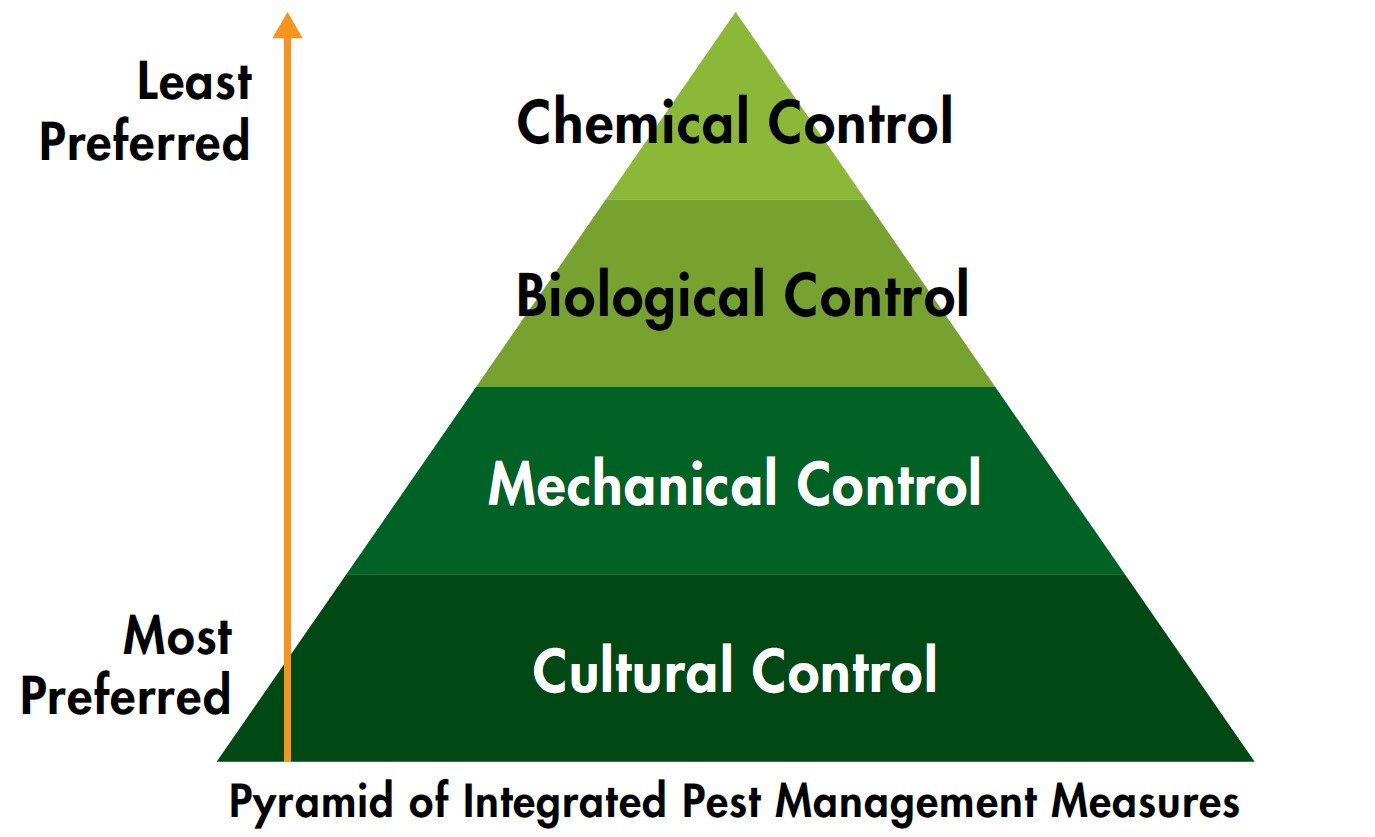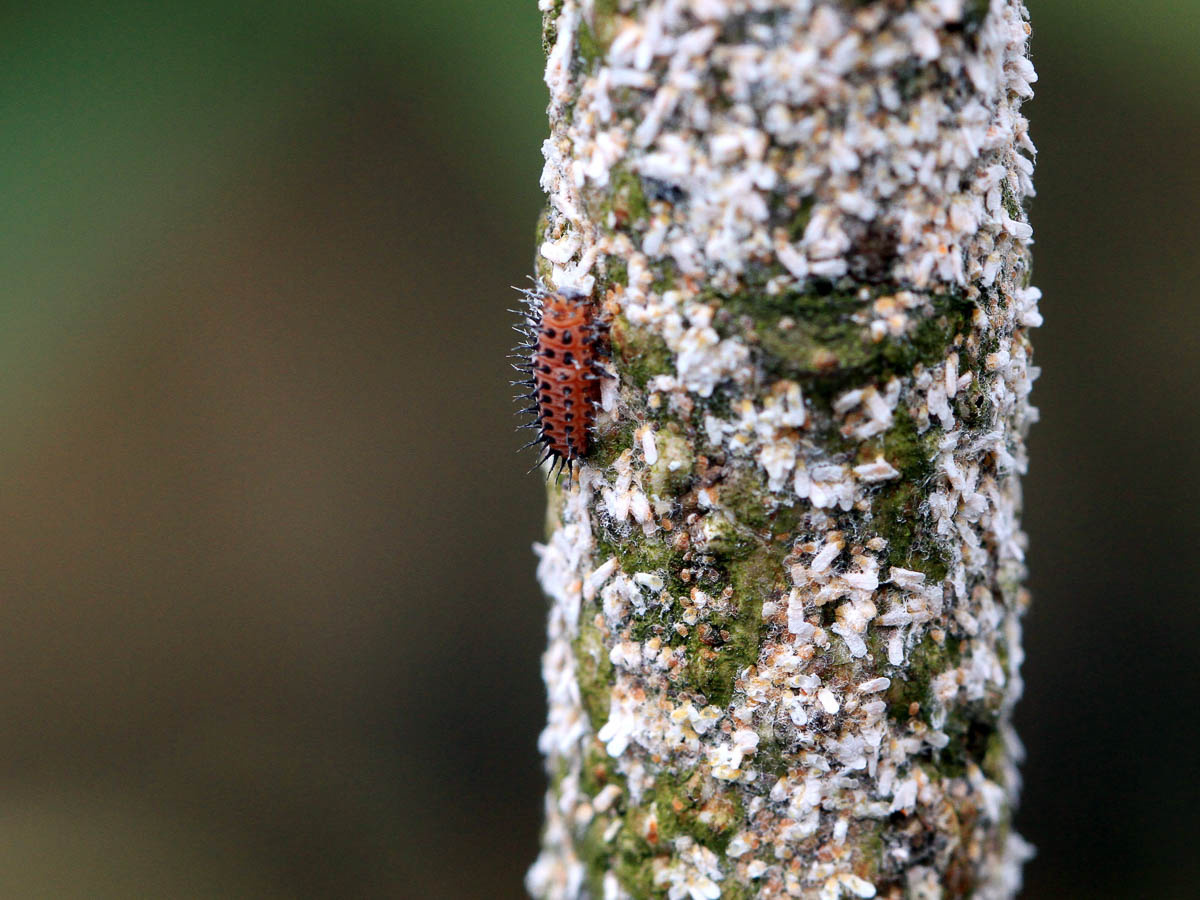Plant Pest Control
There are various ways to control pests, with the most common being cultural, mechanical, biological, and chemical.

General strategies can be used to tackle many kinds of pests at once, but these methods tend to also affect beneficial biodiversity like pollinators and garden predators, making them less eco-friendly than specific strategies, which target specific pests and keeps the garden safe for other beneficial wildlife.
Depending on the kind of pests present, it might be useful to employ more than one kind of pest control. Experiment with the methods below to find what works for your garden!
Cultural control, or preventative control
.jpg)
Cultural control starts with the intention to maintain high standards of garden hygiene and maintenance to keep your plants healthy, and your garden manageable. This ongoing form of control depends on consistent work so that pests are easier to spot and treat before they become a massive infestation. Unhealthy plants will attract pests, which will then affect other plants in your garden.
Here’s how you can keep your plants healthy:
- Choose plants that can thrive in your garden’s environment. Plants that cannot adapt to your garden’s prevailing environmental conditions will be inherently unhealthy and pest prone. For example, sun-loving plants will attract pests when planted in shady areas and vice versa. Use our plant suggester tool to choose your plants wisely.
- Practice good housekeeping habits. Regular weeding, pruning and other routine maintenance will help to reduce hiding places for pests, and keep your plants healthy.
- Consider growing different plants to reduce pest populations. Methods like crop rotation and companion planting will increase the diversity of plants in your garden and reduce the chance of pests taking over their favourite target plant.
Mechanical or physical control
.jpg)
Mechanical control, also known as physical control, involves the use of hardscapes or tools to physically remove or stop pests from reaching the plants. This is particularly effective for preventing larger pests from causing damage to your plants.
Some common methods are:
- Pruning off affected plant parts and disposing them away from the garden to prevent further spread.
- Using netting or cloches to physically prevent pests from reaching plants.
- Physically rubbing and washing away small pests like Aphids, Mealy Bugs, Scale Insects, Whiteflies, and Spider Mites
Biological control

Biological control takes advantage of natural predators and pathogens to keep pest populations in check. Planting biodiversity-attracting plants, reducing or not using pesticides, and learning about garden predators will make your garden a better habitat for them will help keep pest populations down.
Chemical control
Any chemical substance that is meant to kill or repel plant pests is a pesticide. It can be made synthetically or from natural sources, usually other plants. When used in excess, pesticides can become harmful to the environment and garden biodiversity. Pesticides take time to wash away or wear off and can be harmful to humans upon consumption if it is applied too close to harvest. Because pesticides can have such extreme effects, chemical control should be only used as a last resort.
Most chemical controls are applied as a spray. Chemicals can wash off the plant during rain or watering, and are thus best applied during the dry season, or when leaves are dry. Strong chemicals can also burn plants if applied in large amounts if they are left too long on the leaves, or exposed to strong sunlight. A good rule of thumb is to test chemical controls on a small area for up to two days before using it on more plants. Always follow the manufacturer's instructions while applying pesticides on your plants.
Chemical control for edible plants
To keep your edible plants safe for consumption, it is best to use pesticides made from food-safe materials. As an extra precaution, harvest your crops at least a week after the last application of chemical controls to make sure none of the chemicals are left on the plant. Some crop-safe examples of chemical controls are:
-
Baking soda spray is made from mixing half a teaspoon of baking powder with 500ml of water. This spray will increase the pH of whatever it touches, making it an effective tool to remove fungal diseases like powdery mildew. Take care to use this in moderation, as large amounts seeping into the soil may kill the plant.
-
Chrysanthemum sprays can be made by boiling 100g of dried chrysanthemum flowers in 4L of water for 20 minutes, allowed it to steep overnight, and then sieved for use. The spray will degrade and lose its effectiveness within a week. This spray can be used to kill most insects, including Aphids, Mealy Bugs, Whiteflies, Spider Mites, and Grasshoppers, but unfortunately also affects beneficial insects like Bees and Ladybirds. Spray the solution directly onto target pests and use in moderation.
-
Dilute milk sprays, which can be made by mixing 1 part milk to 10 parts water. Proteins and enzymes in milk can be used as a fungicide, and is used to treat black sooty mould, rust and powdery mildew. Spray the dilute milk onto affected plant parts to kill the fungus or mould.
-
Garlic, onion and chilli spray is made from chopping up two chillies, two onions, and two bulbs of garlic, then steeping them in 1L of water for at least 24 hours. The solution can then be sieved and kept for a maximum of two weeks, after which it loses its effect. Compounds in garlic, onions and chillies will repel Thrips, Rodents, and Caterpillars. This solution can be used as a preventative spray in moderation.
Chemical control for ornamental plants
For non-edible plants, you can use a wider range of materials around the house or purchased from plant nurseries:
-
Horticultural oils, which includes white summer oil, neem oil, and superior oil, are oils made from plants or minerals. For example, neem oil is processed from the seeds of the neem tree. They are generally sprayed directly on soft-bodied pests like Aphids, Mealy Bugs, Whiteflies, and Spider Mites to suffocate the adults, larvae and eggs. Take note that horticultural oils can be an irritant, and gardeners should use gloves when applying the oil as a spray. Horticultural oils can also suffocate aquatic life and should not be used near ponds or water bodies.
-
Hydrogen peroxide, which is a common disinfectant that can be bought in pharmacies. 100ml of 3% hydrogen peroxide can be mixed with 400ml of water to make a drench that kills Soil Mealy Bugs. Wash affected roots in the solution for maximum effect.
-
Rubbing alcohol is a common disinfectant that can be bought in pharmacies. It can be directly applied on Scale Insects and Mealy Bugs to dissolve their waxy outer coating and dehydrate the vulnerable soft body underneath. This is best applied with cotton swabs or pads to reach as many nooks and crannies as possible.
-
Sulphur soap spray is made by dissolving an entire grated bar of sulphur soap in 1L of hot water. The compounds in the soap dissolve the exoskeleton of insects, and is particularly effective against Aphids, Mealy Bugs, Scale Insects, Whiteflies, and Spider Mites when applied directly as a spray.

